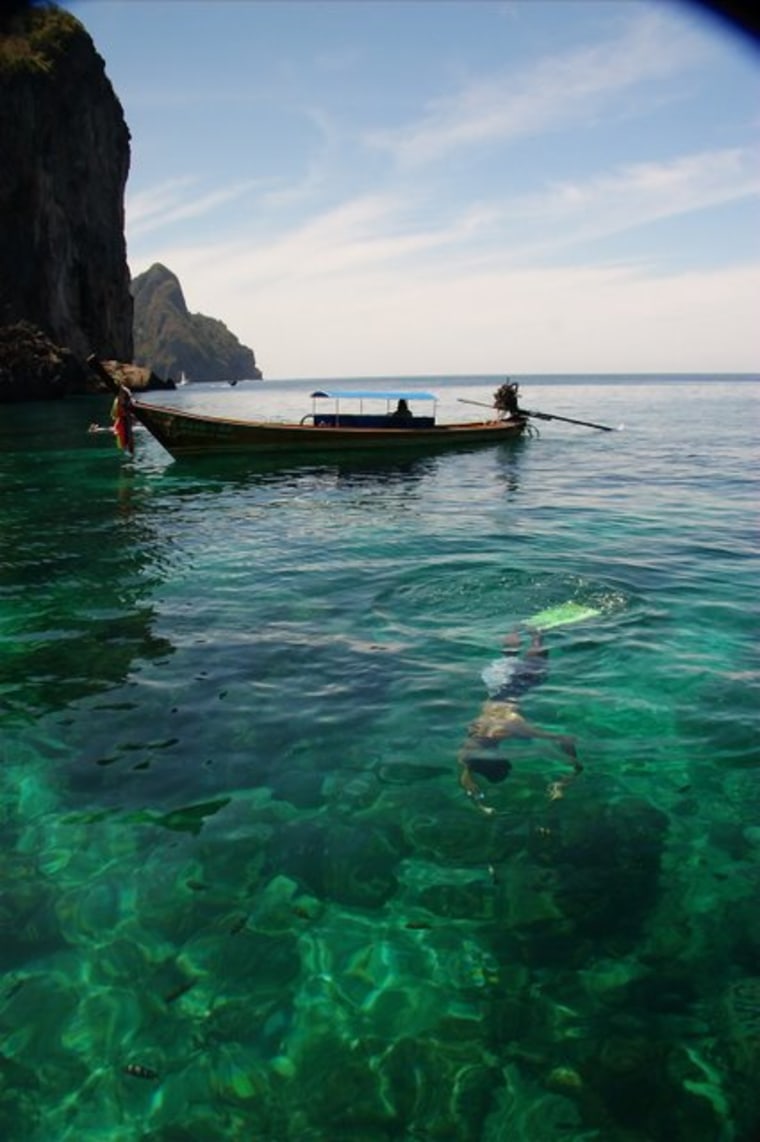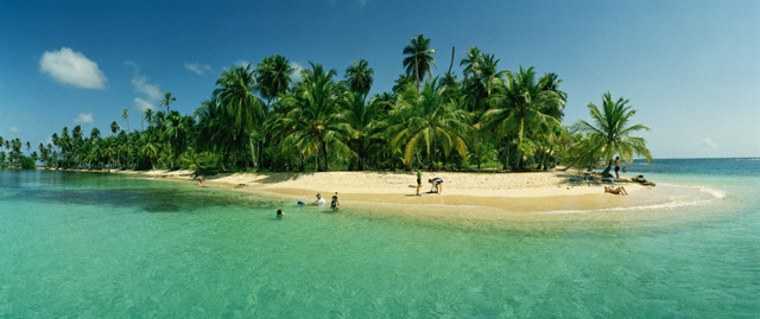Snorkeling opens a window to an exotic and colorful world—and you don’t have to be experienced or even have much money to do it. “It’s really minimalist,” says Bill Keefe, co-owner of Bimini Undersea in the Bahamas.
“It’s not equipment intensive. Just the mask fins and snorkel. And it’s very easy for someone to learn to snorkel even if they are not world-class swimmers. If you have the ability to swim in water over your head and not drown, you can snorkel. Its actually much easier than swimming.”
The minimum of gear can be liberating. And in some cases—diving with whales, for example—the lack of bubbles allows you to get closer to your quarry than you can with scuba gear. “It’s so peaceful. You can float on top of all the sea creatures swimming below and not disturb them in their natural environment,” says Debbie Been, owner of Salt Cay Divers in the Turks and Caicos.
A spontaneous decision to buy snorkel gear or sign up for a snorkeling tour can give you a fresh perspective on a tropical vacation spot. You may discover that even popular, developed shorelines have a wild side. “Reefs are more diverse than rainforests, and what land animal can compete with the beauty, intelligence and evolutionary success of dolphins and whales?” says Tori Cullins, co-owner of Wild Side Specialty Tours on Oahu.
For casual snorkelers, it's possible to pick up a $20 mask and snorkel at a local dive shop, ask around for good spots—and jump right in. On the laid-back Puerto Rican island of Culebra, for example, it’s just a short hike from public transport to world-class snorkeling.
From the mainland, hop a ferry to Dewey, then take a bus to Playa Flamenco; Carlos Rosario Beach is just 20 more minutes away—on foot. Swim just a few yards offshore, and you're snorkeling among a wild selection of coral, sea fans and reef fish.

Similarly, Makaha Beach Park on the Hawaiian island of Oahu is located just off the main highway. Park the car and jump into fantastic snorkeling. Of course, at nearly every popular Caribbean and Pacific vacation spot, plenty of resorts and outfitters are ready to arrange half-day or full-day outings to the offshore reefs.
Real diehards, on the other hand, plan entire vacations around their dives. Like their scuba brethren, they seek out some of the world’s most pristine coral reefs, known for their variety of fish and other sea creatures. Just getting to Rurutu in French Polynesia is a bit of an adventure; but then you still have to take a boat to find migrating humpback whales. Likewise, Australia’s Great Barrier Reef, one of the world’s great snorkeling spots, lies 12 to 50 miles offshore. In some places it’s possible to snorkel from an island resort; in other cases, you’ll have to travel by boat for your day’s swim.
Whatever your level of commitment, a good snorkeling trip requires just four things: clear water, gentle currents, abundant aquatic life and the chance to get away from the crowds. In our list of the world's best snorkeling spots, some require a boat trip, while others are no further than a public beach or park.
